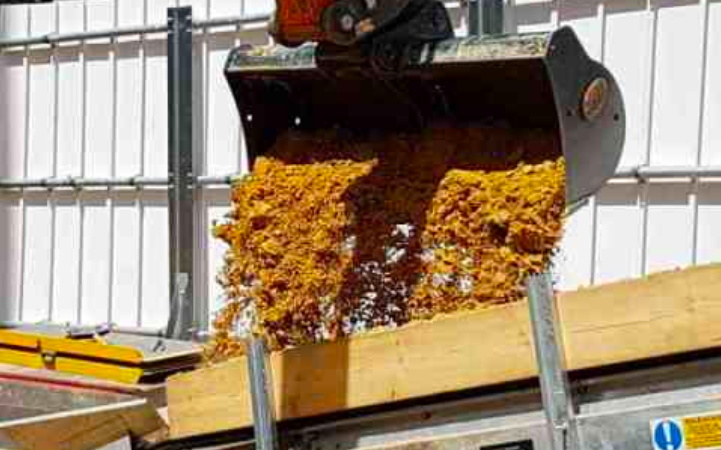- Amanda
- February 28, 2019
How to load a conveyor

Conveyors are designed to be loaded via a continuous trickle of material. This makes them most efficient, carrying as much material as possible as fast as possible.
In reality, conveyors are most often used in applications where it’s impossible to load them completely continuously. Whether you’re loading via wheeled plant, excavator, small machine or by hand, there will be varying amounts of material coming onto the conveyor.
Luckily, conveyors are versatile pieces of kit and, with a few small considerations and adjustments, almost any loading method can be catered for.
How to managed different loading methods
In applications where material is being loaded by hand, variations in bulk might be small enough that the conveyor can cope no problem. No adjustments needed!
On the other hand, if you’re loading your conveyor with large bulk deliveries, such as wheeled plant or an excavator, you’ll need a bigger conveyor fitted with a large feed hopper. This set-up will allow you to get all that material carried away quickly and efficiently without overloading or damaging your conveyor.
Loading with small machines or Bobcats will also need a feed hopper, but you might be able to get away with a smaller one depending on the material you’re conveying and whether your machine operators are willing to trickle feed.
What is trickle feeding?
Imagine you need to empty a large bucket of water into a small sink. If you turn the bucket upside down over the sink, chances are a lot of water will splash over the sides of the sink and you’ll soak yourself in the process. A much better way is to tilt the bucket so it empties more slowly. This way the sink doesn’t overflow and the water can drain quickly down the plug hole.
This is the same as trickle feeding.
Instead of dumping a load of material straight onto the conveyor, empty your machine’s bucket a bit more slowly so the conveyor can efficiently carry the material away.
Doesn’t this reduce throughput?
It might sound counter-intuitive to slow down how you load, but trust us: trickle feeding will maximise the throughput you can achieve with your conveyor. If you don’t trickle feed, you’ll end up spilling lots of material (which then has to be cleared up) or, worse, overloading and damaging your conveyor.
If we think back to our bucket of water and sink, depending how big our bucket is compared to our sink it might make sense to find a bigger sink rather than pour the water out even more slowly. This is why we always ask our customers how they’re going to load their conveyor. If you’re going to have particularly large bulk deliveries then you’ll probably need a larger conveyor to cope.
Get in touch
Why not let Coveya see how much time and money you could save?


